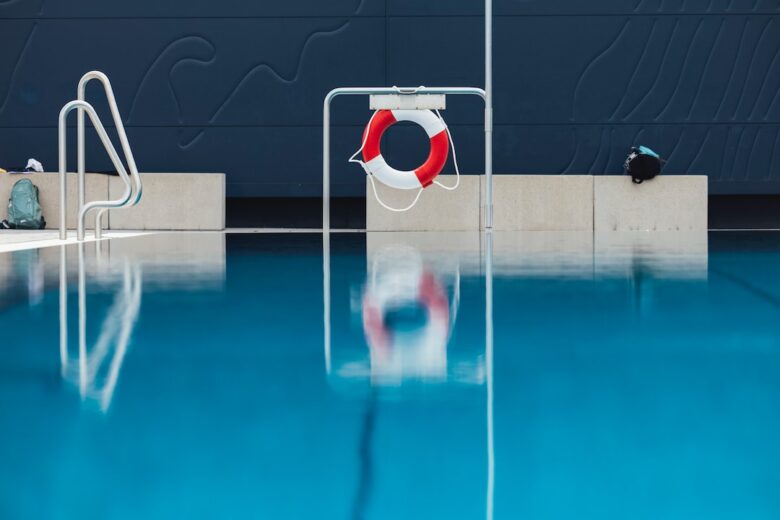Welcome to the captivating world of PC hardware! Here, tech and innovation collide to make mighty machines that can maximize your computing power. Here, we’ll take you through the intricate landscape and reveal the secrets behind these devices.
First, let’s get familiar with the fundamental components. Motherboards, processors, graphics cards, storage – each part plays a big role in your system’s performance and features. By learning more about these components, you’ll be able to make wise decisions when building or upgrading your PC.
But it doesn’t end here. The tech industry is ever-evolving; new trends are emerging at a rapid rate. Keeping up can be overwhelming, but don’t worry! We’ll guide you through this changing landscape. From figuring out compatibility between hardware to overclocking benefits – we’ll give you the knowledge to stay ahead.
Here’s a story to show how important it is to understand PC hardware. A gamer was so excited for a new game, only to find out their system didn’t meet the requirements. So, they upgraded their graphics card – but missed other factors like power supply compatibility. It was an expensive mistake that prevented them from playing the game until they fixed it. This teaches us how vital it is to understand PC hardware before making any changes or investments.
Understanding PC Hardware and Components
To learn PC hardware, let’s look at the parts that make up a computer system. See the table below for a full overview.
| Component | Description | Function |
|---|---|---|
| Motherboard | Main circuit board | Connects all parts |
| CPU | Central Processing Unit | Executes commands |
| RAM | Random Access Memory | Stores temporary data |
| Storage | HDD and SSD | Stores permanent data |
| Graphics Card | Handles visuals | Enhances graphics |
| Power Supply | Supplies power | Ensures stable operation |
Peripherals like keyboards, mice, monitors, and printers also help create a functional PC setup. To ensure compatibility between devices, remember the different interfaces and connectors available.
Pro Tip: When buying PC hardware, consider your needs and budget. Read customer reviews and get professional advice to find the best parts for you.
Choosing the Right Processor
Selection of the ideal processor is vital for PC performance. Let’s explore some key points to bear in mind when choosing the perfect processor.
Clock Speed, Cores, and Cache Size are important. For instance, 3.5 GHz with 4 cores and 8MB cache size. Or, 4.0GHz with 6 cores and 12MB cache size. Or, 4.2GHz with 8 cores and 16MB cache size.
Also, look at the power requirements. Check compatibility with other components and software.
My friend was gaming with low specs processor. This caused frequent lag and low frame rates. But, when they upgraded to a powerful processor, gaming experience changed drastically! Smoother gameplay and increased frame rates.
To conclude, when selecting processor, consider clock speed, cores, cache size, power requirements, compatibility, and software needs. As my friend’s experience shows, investing in a suitable processor can make a big difference without breaking the bank. So, next time you want to upgrade, keep these tips in mind to make the right decision.
Selecting the Perfect Graphics Card
Let’s simplify the process of selecting a graphics card. We’ll explore key aspects in a table format.
| Aspects | Description |
|---|---|
| Performance | Core clock speed, memory size, and memory type decide performance. Higher clock speeds and larger memory sizes give better performance. |
| Compatibility | Check if the graphics card is compatible with your system’s motherboard and power supply. Look for PCIe slots and power connectors. |
| Budget | Graphics cards come in various price ranges. Determine your budget and look for options within that range. Balance cost and performance. |
| Cooling | Efficient cooling is essential to prevent overheating of the graphics card. Look for cards with fans or heatsinks to ensure optimal performance. |
| Manufacturer | Choose reputable manufacturers known for quality products and customer support. Research customer reviews and ratings. |
Assess your requirements based on intended usage, like gaming or content creation. Compare different graphics cards with benchmark tests for real-world conditions.
Exploring Memory and Storage Options
Choose wisely when selecting memory and storage options for your PC. Unlock potential performance and productivity by understanding the features of the different choices.
DDR4 SDRAM memory offers high data transfer rates, perfect for multitasking. Storage-wise, SSDs provide fast read and write speeds, granting quicker access to files.
Be informed about memory and storage options. This will help you make decisions that will boost functionality, speed up processes, and improve user experience. Don’t miss out on the great benefits these can bring to your PC. Educate yourself now and unlock greater efficiency in your computing endeavors.
Understanding Motherboards and Power Supplies
Motherboards and power supplies are essential in any PC setup. They have an important role in the system’s smooth running. Let’s explore these components.
- Let’s see more about motherboards and power supplies in a table:
| Component | Motherboard | Power Supply |
|---|---|---|
| Function | Connects all hardware devices in computer | Converts AC to DC for the computer |
| Size | Different form factors | Different wattage options |
| Compatibility | Needs to match other hardware components | Needs to provide enough power for all components |
| Expansion Slots | Allows extra cards to be installed | N/A |
| Connectors | USB, HDMI, SATA, PCIe slots | Power connectors for components |
Now let’s go into unique details about these two.
Did you know that modern motherboards come with built-in networking? This means you don’t need a network card for internet connectivity. Some motherboards support overclocking too. This means you can increase CPU and RAM performance for gaming or resource-heavy tasks.
Pro Tip: When choosing a power supply, make sure it has enough wattage for all your components. It’s better to have extra power for upgrades or expansions.
Tips for Building Your Own PC
Constructing your own PC can be gratifying and economical. Here are some guidelines to assist you in the world of PC hardware and parts:
- Pick the right components: Investigate and pick the finest CPU, GPU, motherboard, RAM, storage, and power supply for your needs.
- Look ahead to upgrades: Pick components that are compatible with future upgrades to guarantee durability and expandability.
- Measure accurately: Make sure the case you select fits all the components you want to install.
- Invest in top-notch cooling: Right cooling is essential to avoid overheating and optimize performance. Look at both air and liquid cooling choices.
- Don’t overlook cable management: Arrange your cables neatly inside the case for better airflow and a neat look.
- Test everything prior to final assembly: Before concluding the building process, test each part alone to guarantee they all work.
Additionally, recall some extra things. Dodge static electricity by grounding yourself before touching any sensitive components. Utilize online resources like user forums and video tutorials for guidance while constructing.
To conclude, constructing your own PC necessitates mindful thought of component selection, compatibility, measurement accuracy, cooling choices, cable organization, and extensive testing. Following these guidelines can help guarantee a successful build while optimizing performance and endurance.
Troubleshooting Common Hardware Issues
Fret not if you are having PC hardware issues! Here are a few tips to help you troubleshoot and fix common hardware problems.
| – Firstly, check if all connections are secure. Look at cables, plugs, and sockets for any loose or damaged ones. |
| – Reboot your computer. This can often resolve many hardware-related problems by refreshing the system. |
| – Update your drivers. Outdated drivers can lead to malfunctioning hardware. Go to the manufacturer’s website for the latest versions. |
| – Run diagnostic tests. Software programs are available to identify and fix common hardware issues. |
| – Remove recently installed hardware components. Conflicts between new and existing hardware can cause problems. |
| – Seek professional help if none of the above steps work. An expert might be able to diagnose and repair more complex hardware problems. |
These tips address different aspects of troubleshooting common hardware issues. Checking connections ensures electrical flow, rebooting refreshes temporary glitches, updating drivers enhances compatibility, diagnostic tests identify problems, removing hardware components eliminates conflicts, and professional help offers tailored advice. By following these steps, you can effectively fix common hardware issues and keep your PC running smoothly.
Remember, understanding how components interact is key to PC hardware troubleshooting. Keep these tips in mind whenever you encounter problems, and you’ll be able to overcome them with confidence.
Overall Recommendations and Conclusion
- Invest in high-quality PC hardware and components.
- Check compatibility to avoid issues.
- Consider your needs and budget.
- Keep up with trends and advancements.
- Maintain and clean your PC.
Remember, the world of PC hardware changes. New tech appears. Staying informed helps when purchasing or upgrading. Each component is vital for system functionality.
An example of why quality is essential: a friend bought cheaper components for his gaming rig. After a few months, crashes and lagging issues started. He had to replace the faulty components, costing more in the long run.
Frequently Asked Questions
FAQ 1: What are the main components of a PC?
Answer: The main components of a PC include the CPU (Central Processing Unit), motherboard, RAM (Random Access Memory), storage devices (such as hard drives or SSDs), graphics card, and power supply.
FAQ 2: How do I choose the right CPU for my needs?
Answer: When choosing a CPU, consider factors such as the intended usage (gaming, content creation, etc.), desired performance, budget, and compatibility with your motherboard. Research benchmarks and reviews to find the best fit.
FAQ 3: What is the importance of RAM in a PC?
Answer: RAM plays a crucial role in PC performance by temporarily storing data that the CPU needs to access quickly. More RAM allows for smoother multitasking and faster overall system responsiveness.
FAQ 4: How do I determine the suitable power supply for my PC?
Answer: To determine the appropriate power supply, calculate the total power requirements of your components (CPU, GPU, etc.). Aim for a PSU with sufficient wattage and efficient power delivery. Consider future upgrades as well.
FAQ 5: What factors should I consider when buying a graphics card?
Answer: When purchasing a graphics card, consider factors such as your PC’s power supply, available physical space, desired gaming resolution and settings, and budget. Research the performance benchmarks and compare options.
FAQ 6: How can I ensure compatibility between PC components?
Answer: To ensure compatibility, check specifications and compatibility lists provided by manufacturers. Pay attention to factors like socket types, RAM speed compatibility, graphics card slot compatibility, and power supply connectors.



